Here’s another easy recipe from my new book, Elderberries: The Beginner’s Guide to Foraging, Preserving and Using Elderberries for Health Remedies, Recipes, Drinks and More (available now on Kindle and in paperback).
This is a beautiful, deep purple schnapps that is so simple to make with either fresh or frozen elderberries. See the directions at the bottom of the recipe to use dried.
You make elderberry schnapps in a similar way to elderberry liqueur, but no sugar is used and the berries are frozen first. This is said to improve their sweetness (I can’t tell much difference, to be honest). Schnapps recipes also use far more elderberries and far less vodka than liqueurs. You can serve elderberry schnapps at room temperature (it’s potent!) or mix it in cocktails.
Ingredients:
- One pint jar of fresh elderberries, cleaned and stems removed, frozen for at least a week
- 80 proof vodka
Directions:
1. Remove your jar of frozen elderberries from the freezer and pour in vodka, just to cover the berries.
2. Put the lid tightly on the container and shake. Put aside and let steep in a dark place for 1-4 weeks, shaking periodically.
3. Strain through a muslin-lined strainer, pressing to remove all of the juice from the berries, into a clean glass container with a tight fitting lid.
4. Allow to age in a cool, dark place for at least 2 more months before using.
To use dried elderberries: Fill a pint jar 1/3 full of dried elderberries. Fill the jar the rest of the way with vodka (leaving one inch of head space) and freeze for one week. Then proceed with steps 2-4.
~ ~ ~
Other recipes in the book include:
- Elderflower recipes like elderflower fritters, elderflower soda and elderflower cordial
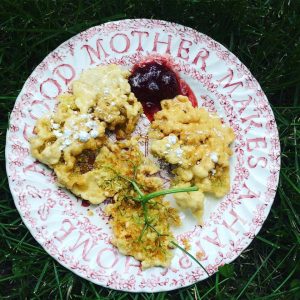
- Elderberry recipes like elderberry meringue pie, elderberry truffles and elderberry thumbprint cookies
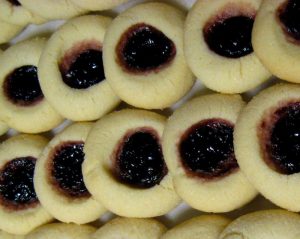
- Medicinal recipes like elderberry anti-flu syrup, elderflower tea and elderberry lollipops
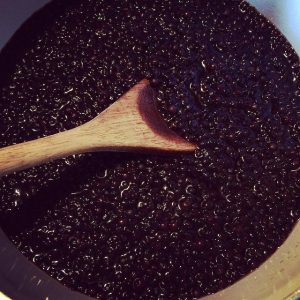
- Jelly and jam recipes like elderflower-rhubarb jam and elderberry-crab apple jelly
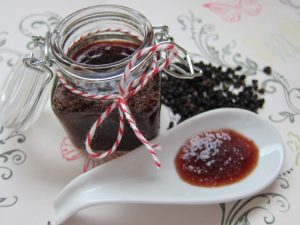
- Recipes for spirits like elderberry wine, elderflower liqueur, elderberry mead, elderitas and elderberry hard lemonade
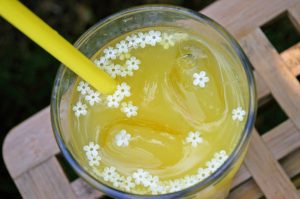
- Plus 50+ more
The book also includes information on health uses for elderberries and elderflowers, how to find them in the wild (they grow all over the United States, Canada, Europe and beyond!), how to grow your own, how to preserve them (freezing, canning, drying and more), how to tell elderberry shrubs from so-called poisonous look-alikes, and more.
You can look inside the book and check out a preview here (click on look inside!).
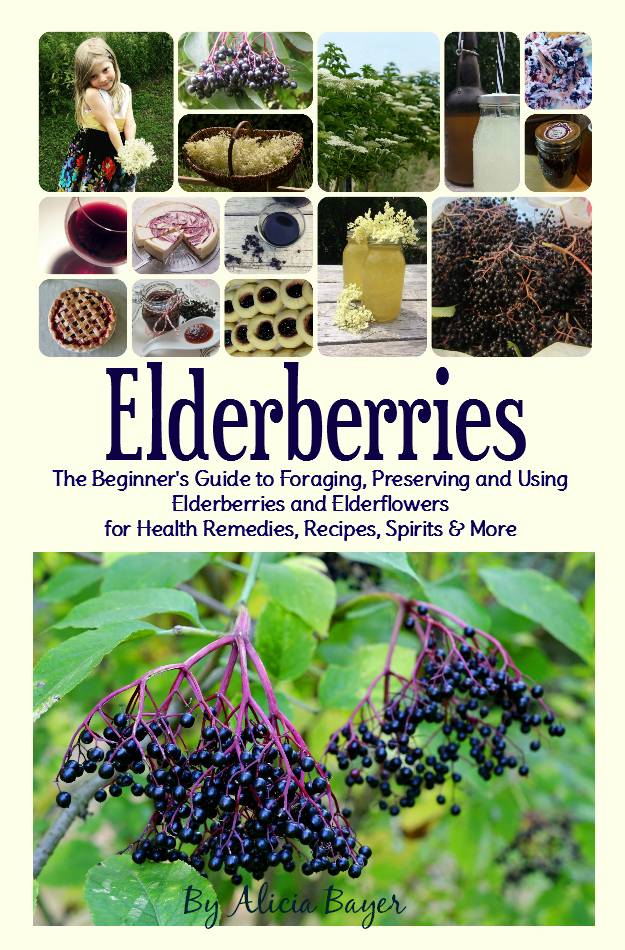


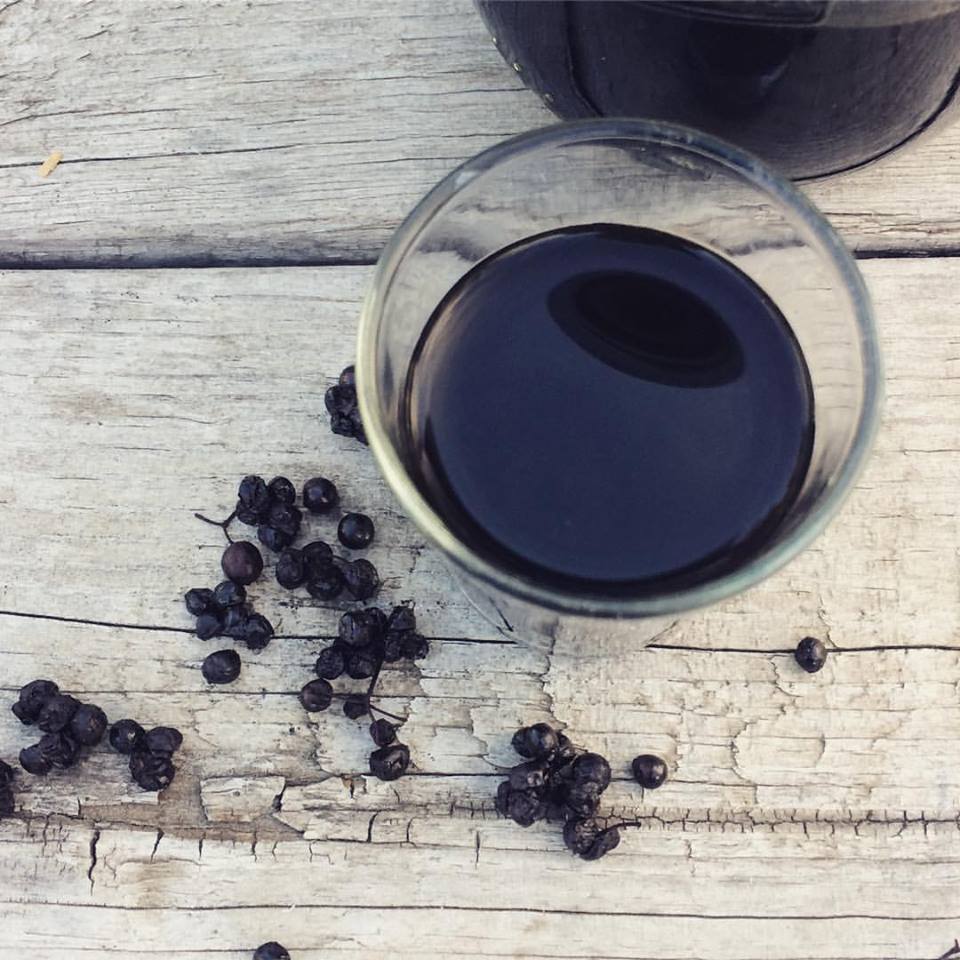

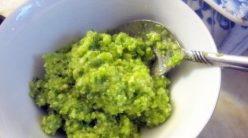

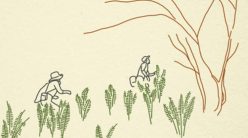
8 thoughts on “Make Your Own Elderberry Schnapps!”
How to Make Elderflower Soda (or Elderflower Sparkling Wine) – A Magical Life
(June 22, 2017 - 11:36 pm)[…]  Make Your Own Elderberry Schnapps!…Here’s another easy recipe from my new book, Elderberries: The Beginner’s Guide to Forag […]
Elderberry Cream Cheese Cupcakes – A Magical Life
(July 19, 2017 - 9:40 pm)[…]  Make Your Own Elderberry Schnapps!…Here’s another easy recipe from my new book, Elderberries: The Beginner’s Guide to Forag […]
It’s Elderberry Season! – A Magical Life
(August 8, 2017 - 7:00 pm)[…]  Make Your Own Elderberry Schnapps!…Here’s another easy recipe from my new book, Elderberries: The Beginner’s Guide to Forag […]
Gregg
(October 27, 2017 - 12:54 pm)Yes you can forage in State Parks in Minnesota but only nuts, mushrooms, and fruit…A general statement saying you can forage in state parks could get people in trouble…Aside from that I like what you’re doing…
Alicia Bayer
(October 29, 2017 - 3:38 pm)I’m not sure where we’ve said here that you can forage anything in state parks. State parks are mentioned in the book, but the book does explain that here in Minnesota you can forage fruits and mushrooms but that every forager should check his or her local laws.
Glad you like it. Thanks!
Recipe: Elderberry Lemonade Popsicles – Alicia Bayer
(August 20, 2018 - 11:26 am)[…] Elderberry Schnapps […]
Patty Grist
(August 29, 2018 - 10:53 pm)I’ve discovered what I believe to be an elderberry tree (or bush) in among tall weeds of an abandoned golf course (soon to be come a warehouse facility!) I am very much interested in beginning this interesting hobby. I’ve seen a few bushes as well as berries hanging from very old limbs of trees The berries from the trees matured first and I tasted a tiny finger portion of its fruit. Very BITTER … causing me to spit it out. On the other side of the course I’ve spotted another possible elderberry that is more like a bush and has reddish colored branches. Can you advise me as to which of these I should try to give a new home? Thanks
Alicia Bayer
(August 30, 2018 - 8:50 am)I would first be sure to 100% properly identify the elders. Always look at all parts of a plant to know you’re absolutely sure on your ID — the leaves, berries, habitat, type of plant, etc. I have some pictures of so-called poisonous look-alikes in my elderberry book along with information about each of the parts, and go over all of the elements to look at. There are no plants that are really that close to elders in more than one or two ways. For instance, there are plants with similar berries but they grow on vines and not shrubs with bark, or there are trees with similar berries but the leaves look quite different. Once you look at all of the parts, it’s pretty easy to be sure.
Secondly, I would advise against transplanting this time of year unless they’re going to be demolishing the site soon. Elders are quite easy to transplant by runners in the late winter or early spring, or to propagate by cuttings in winter or very early spring. If you must try to transplant the shrub this time of year, I would try to transplant smaller runners and I would do it on a cloudy, cool day.
As for which plant, I could not say without photos whether either of these are elders and what variety they might be. I’d suggest going to the USDA database and looking through photos of various elder species there, or consulting an ID guide. I’m assuming the fruit is either blue or dark purple-black, meaning it’s probably a blue elderberry or the standard American elderberry. Bright, fire engine red berries are from red elderberries and shouldn’t be consumed (some folks say they are poisonous but they are edible once they’re cooked — they just never taste very good and don’t have the wonderful properties of black or blue elderberries).
Also, elderberries should generally never be consumed raw. Some people can eat a few (or even a handful) without issue, but about a third of the population will get quite sick (vomiting, diarrhea, etc.) from just a few. There’s no way to know which camp you’re in, so it’s advisable to always cook elderberries before consuming them. They are safe in tinctures, liqueurs, schnapps, etc. since it’s the seeds that cause illness and you do not consume the seeds with those. Raw elderberries also just are not tasty.
Good luck with rescuing the possible elders!